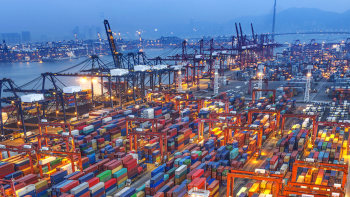
The Philippine Foreign Trade boosted by 12.9%, amounting to $216.20 billion in 2022 from $191.58 billion in 2021. However, the imports further broadened the country’s trade gap by 38%, according to the Philippine Statistics Authority (PSA) data.
The total foreign trade of imports, which comprised 63.5%, grew 17.4% to $137.22 billion in 2022 from $116.89 billion in 2021 as the economy regains momentum to recover from the pandemic. Some imports are raw materials to semi-processed or finished goods for export. Thus, Exports likewise gained, but at a slower pace of 5.7% to $78.98 billion from $74.693 billion, which led to a trade deficit.
Meanwhile, the growth in other imports was because of significant increases in the free-on-board of all top 10 major commodity groups, with mineral fuels, lubricants, and related materials recording the fastest year-on-year rise of 74.6%, according to PSA. Next is the growth of transport equipment, which rose 32.9% year-on-year, and cereals and cereal preparations, up 26.8%.
Based on PSA data, the year-on-year growth rate of value of Philippine Exports, six of the top 10 major commodity groups recorded increases in 2022, and these were coconut oil (46.5%), other mineral products (15%); electronic products, (7.4%); other manufactured goods, (3%); ignition wiring set and other wiring sets used in vehicles, aircraft and ships, (2.2%); and electronic equipment and parts, (1.7%).
With the Philippine Export Development Plan (PEDP) 2023-2028, taking an Industry Development Approach to Grow PH Exports will help decrease the country’s trade gap by 2023 onwards. We foresee an expansion of markets and access to goods and services for foreign and local buyers through more FTAs, RCEP, and EU GSP+ as a competitive advantage, eventually leading to a trade surplus. JVL
